What is fire? How does it affect national parks? What can YOU do to help? Learn the answers to these questions and explore so much more in Fire Basics for Kids learning series.
-
Article 1: Wildland Fire: What Is Fire?

Fire is a chemical reaction that starts with lightning, lava, or a match. Fire is the combination of heat, fuel, and oxygen. This is known as the fire triangle. Fuels include grasses, needles, leaves, brush, and trees. Where and how quickly a fire moves depends on the terrain, weather, and types of fuel. The diversity of plants and animals in many national parks can depend upon fire. What may look at first like devastation soon becomes a panorama of new life. Read more
-
Article 2: Wildland Fire Facts: There Must Be All Three
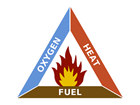
All fires need heat, fuel, and oxygen to burn. Remove any one of them and the fire will not burn. Heat comes from an ignition source such as lightning or lava. Fuel is any material that will burn. Some fuels, such as dead trees and plants, contain less water than living ones, so they usually burn sooner and hotter than live ones. The air we breathe has 21 percent oxygen, more than enough to allow a fire to burn. Firefighting tactics and equipment remove heat, fuel, or oxygen. Read more
-
Article 3: HOT Fire Facts for Kids
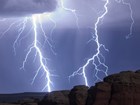
Wildland fires can help certain ecosystems remain healthy and productive. Fires have burned across the earth for millions of years and continue to today. About 10 percent of fires occur naturally with the help of lightning and lava, but people start about 90 percent of wildland fires, most often accidentally. Lightning strikes the earth about 100 times each second with temperatures that can sometimes reach more than 50,000? (28,000?). Read more
-
Article 4: Wildland Fire: Junior Ranger Program

Do you want to become a junior wildland firefighter? Download the wildland firefighter activity booklet, complete the activities, and print your online badge. Congratulations! If you want to learn more, find parks near you with a junior firefighter program. Explore other NPS junior ranger program activities! Read more
-
Article 5: Wildland Fire: Resource Management
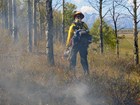
Land managers use “prescribed fire” to renew some natural and historical environments. These purposely lit fires transform habitats to support or protect native species. They can also help re-create historic landscapes that have not been burned recently. Land managers also use fire by monitoring a naturally started fire and allowing it to burn to meet specific resource objectives. All fires are potentially dangerous. Protecting human life is always the first priority. Read more
-
Article 6: Wildland Fire Quiz
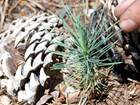
NPS shares interesting facts about wildland fire and fire ecology for kids. Topics introduced include chinook winds, which can quickly spread fires; the power of the sun in heating fuels; how lightning works; how prescribed fires are conducted safely; Native Americans’ ancient use of fire for hunting; and the necessity of fire to the reproduction of some plant species. Read more
-
Article 7: Dangers of Wildland Fire
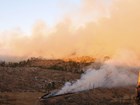
Although fire can benefit ecosystems, it may threaten human life or property. Smoke can also damage homes and affect human health. Fire is a powerful force. Campfires or the burning of garbage should be done only after reviewing rules and regulations and after considering the chances that the fire could burn out of control. High winds, hot days, and lots of dry materials are dangerous conditions for starting a fire. Read more
-
Article 8: Great Fire Websites for Kids
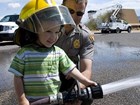
Learn about fire with these different websites. From Fire Prevention Week to Smokey Bear, fire-dependent ecosystems to fire safety and wildland firefighting as a career, there are all sorts of online tools for fun and learning. Read more
